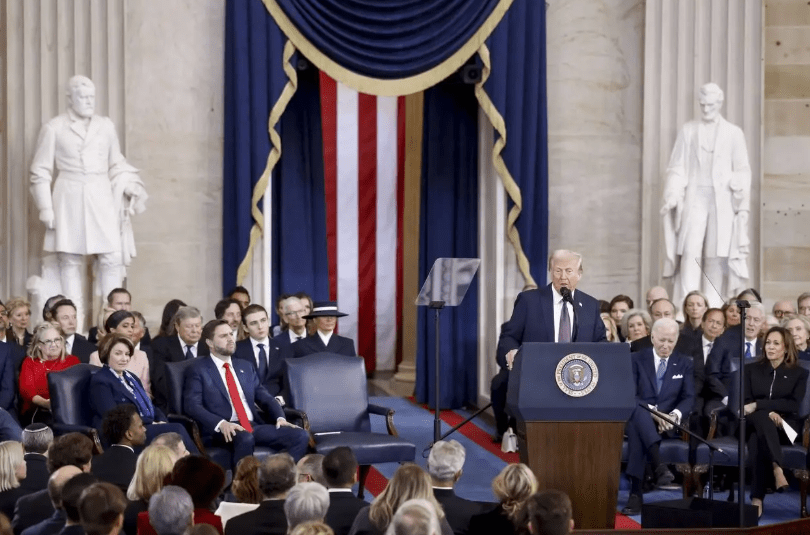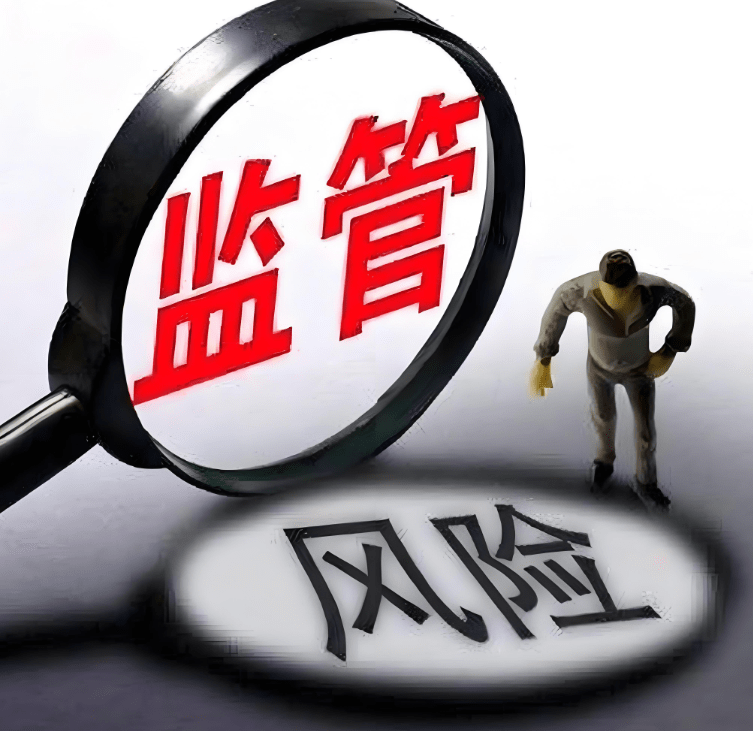The Federal Reserve Chairman casually throws out the signal of 'flexible regulation'; as Trump rages on the X platform, a hundred trillion dollars of traditional capital is quietly approaching the boundary of the crypto world.
Federal Reserve Chairman Powell's statement this morning, 'willing to listen to new ideas for improving the bank capital framework,' may seem like a bland regulatory meeting remark, yet it has stirred ripples in the crypto market.
He did not discuss the economic outlook or monetary policy, yet at a sensitive moment of sustained pressure from Trump, he suddenly extended an olive branch to the banking sector with 'new ideas'—this is no coincidence.
The deeper meaning behind the speech: The key to the banks' vaults is turning.
As the Trump team frantically attacks Powell over the Fed building's renovation budget overruns, the Federal Reserve Chairman calmly shifts focus to another front: reforming the bank capital framework.

On the surface, it appears to be a technical adjustment, but there is a hidden agenda. Powell hinted at this four months ago when he clearly stated at the Chicago Economic Club: the Federal Reserve has no intention of preventing banks from serving legitimate crypto clients, and even suggested that 'some of the guidance may be relaxed.'
This speech takes a step further—directly soliciting 'new ideas' from the banking sector. Translated into plain language: as long as financial security is guaranteed, the handcuffs on banks' crypto operations can be loosened.
Power struggle: Trump's fury and Powell's trump card.
The current confrontation between the White House and the Federal Reserve has reached a boiling point. The Trump team has seized on the renovation budget for the Fed headquarters, which soared from $1.5 billion to $2.5 billion, to make a big deal out of it, even hinting at initiating a review process for Powell.
Federal Housing Finance Agency Director Purte stirred the pot on the X platform: 'Powell's resignation speech will come,' while Treasury Secretary Basant publicly declared, 'a review of the entire Federal Reserve institution is needed.'
Facing the siege, Powell calmly plays three trump cards: the Federal Reserve's independence, the self-sufficiency of funds (the renovation money comes from investment income), and tonight's regulatory flexibility.
This move, light as a feather, transforms political attacks into financial innovation topics.

Funding gateway: The triple channel for banks' entry has been opened.
Compliant stablecoins emerge as the biggest winners. The passage of the U.S. GENIUS Act marks a legal endorsement for the private sector to issue compliant digital dollars. Traditional banks gain a golden channel to participate in stablecoin operations.
Obstacles to custody services are being cleared. Powell has long made it clear: as long as it is within the regulatory framework, bank crypto custody is entirely feasible. Now, in conjunction with the capital framework reform, more banks will boldly enter.
A payment settlement revolution is quietly starting. Visa's collaboration with USDC on the 'stablecoin direct settlement' system completes cross-border payments in 3 seconds, with fees only 1/10th of SWIFT's. This system is projected to process over $10 billion by 2025.
Stablecoin boom: A trillion-dollar ecosystem reconstruction under the wave of compliance.
The global regulatory landscape is undergoing dramatic changes:
The EU's MiCA regulations set a €2 million transaction volume threshold for non-euro stablecoins.
Hong Kong has finalized the timeline for the implementation of stablecoin regulations.
South Korea's (Digital Asset Basic Law) requires a reserve of 500 million won.
Stablecoins have transformed from marginal tools into financial infrastructure. Their transaction volume reached $14 trillion last year, surpassing Visa to become a new payment giant. Institutions like BlackRock have injected $500 million in a single day through ETFs, merely the beginning of the wave.

Maersk's shipping settlement platform in collaboration with USDC has compressed the cross-border logistics cycle from 7 days to 4 hours; a million blue-collar workers in the Philippines can exchange their salaries in real-time through stablecoin payroll cards— the penetration of the real economy far exceeds market expectations.
Wealth password: Three ambush directions and risk reefs.
Bank-backed stablecoins are poised for an explosion. Circle has secured currency service licenses across all 50 states in the U.S. and partnered with BNY Mellon to custody reserves, establishing a 'fully licensed + top-notch custody' model as the standard pathway for institutional entry.
The Ethereum ecosystem may lead the charge. Ethereum has currently broken through $3700, with $331 million in short positions piling up at the $4000 mark; a breakthrough will trigger a chain liquidation. BlackRock's Ethereum ETF saw a $400 million inflow in one day, indicating clear institutional accumulation intentions.
The value of compliant cross-chain protocols is becoming prominent. Multichain's mUSDC has achieved real-time cross-chain capabilities across 10 public chains, solving the 'island problem' between chains. As bank funds enter, the value of cross-chain liquidity hubs will be reassessed.

Risk undercurrents are simultaneously surging:
Regulatory arbitrage risk: Differences in regulations among U.S. states may trigger compliance arbitrage.
Technical tail risk: A March USDC cross-chain contract vulnerability led to a loss of $20 million.
Market monopoly intensifies: USDT, USDC, and BUSD account for 95% of the market share in an 'oligopoly pattern.'
The crypto world is about to face the most ferocious wave of capital—when traditional banks' trillion-level capital floods into the blockchain through compliant stablecoin channels, a Bitcoin price of $120,000 will merely be a new baseline, and Ethereum at $4000 will turn into a graveyard for shorts.
Behind the political smoke of the Fed renovation dispute, Powell has opened a crack leading banks' vaults toward the crypto world. Meanwhile, astute Wall Street institutions are constructing hedging positions in crypto assets through trading based on the steepening yield curve of government bonds—this is a standard defensive move before traditional capital's massive entry.
Tonight, the lights of the Federal Reserve headquarters are destined to stay on. Beneath the surface of budget disputes over renovations, a financial revolution reshaping global capital flows is quietly underway.
The last question: Do you want to be a lifelong victim, or focus on the next wealth-generating trend as a fan?—When making a choice, the K-line is watching you.